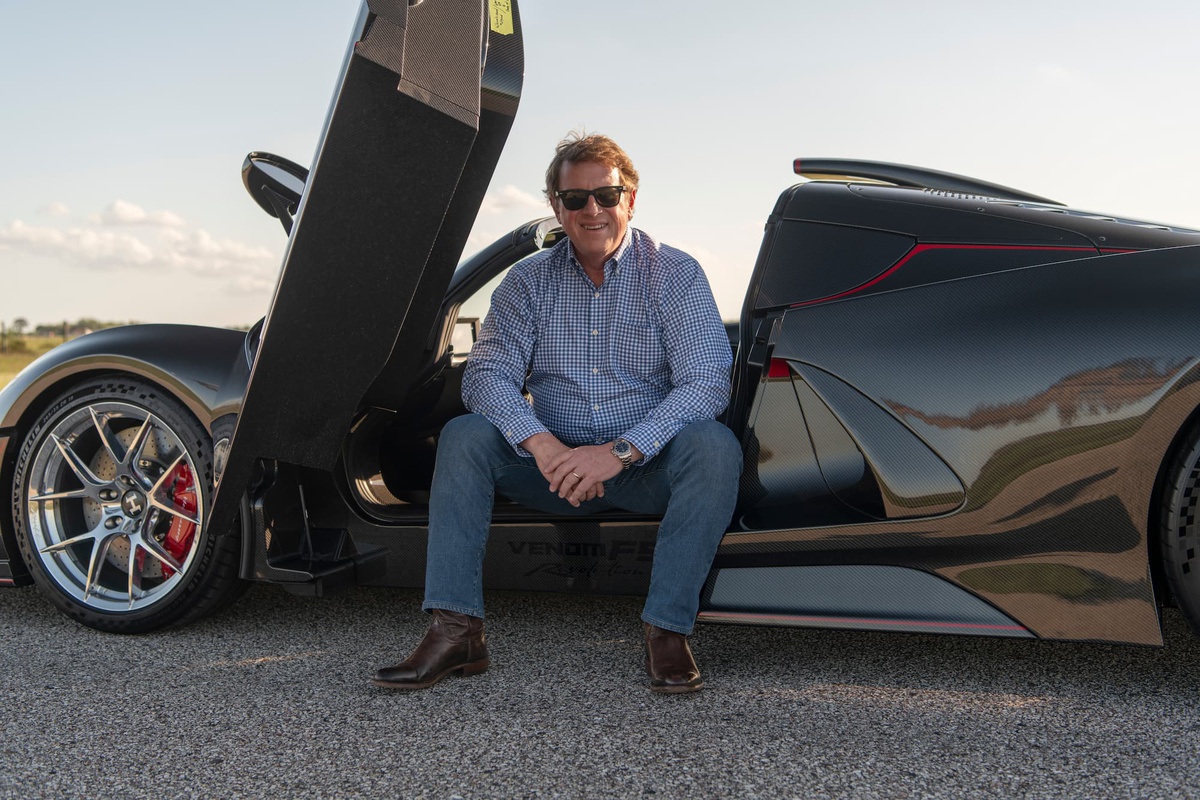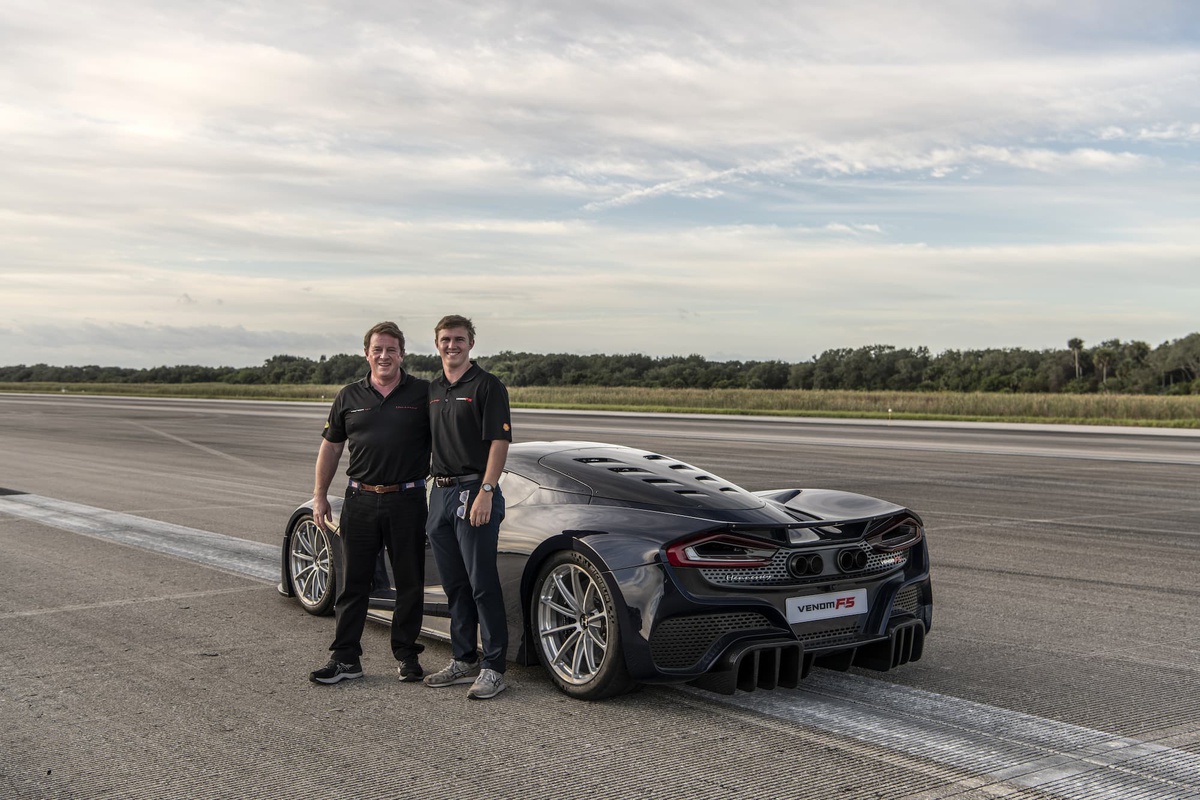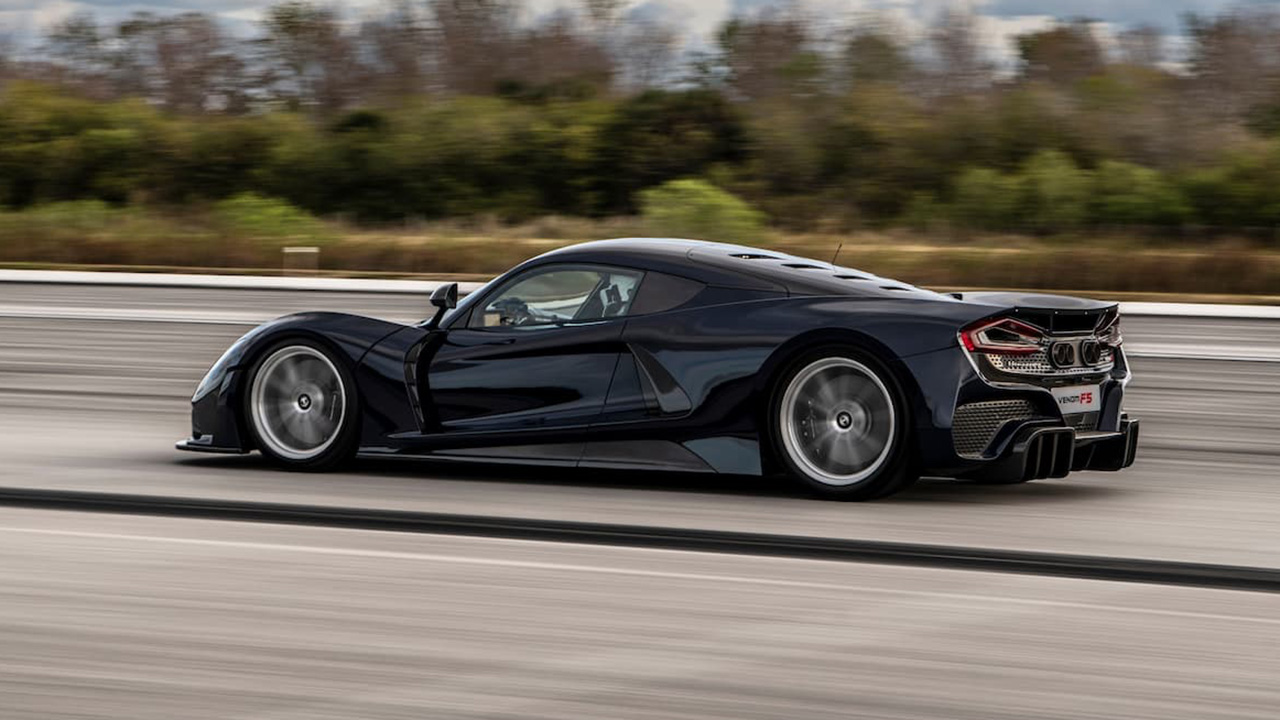Texas-based Hennessey showcased its high-speed capabilities, rivaling Bugatti and Rimac. Founder John Hennessey initially drove the Venom F5 to 219.07 mph (352.55 km/h) in the standing half-mile. Test driver David Donahue then achieved a VBOX-verified speed of 221.92 mph (357.14 km/h), setting what appears to be a new world record for the half-mile.
"This was my first opportunity to pilot our Venom F5 beyond 200 mph while testing. I did not intend to go so fast, but our hypercar's power and acceleration are indescribable. Our test driver, David Donahue, may have achieved a World Record speed for the distance; I'm not aware of any other production car going that speed. We will return to NASA later this year when it's cooler, as I expect the F5 to be even faster," said John Hennessey, Founder and CEO of Hennessey Special Vehicles.
This achievement is particularly satisfying as it follows a crash during a 250-mph (402 km/h) test run of a Venom F5 testing a new aerodynamic package. The incident was part of an ongoing development process led by Brian Jones, VP of Engineering, who has enhanced Hennessey's development processes since joining last year.
"We generally don't do these tests during the summertime because it's just too hot. But the F5 handled the heat well, making six or seven runs without overheating," Hennessey noted. This resilience is crucial for buyers in regions with extreme weather conditions, ensuring that the hypercars perform reliably.




Rimac claimed several speed records earlier this year without providing complete data. The Bugatti Chiron Super Sport takes around 14 seconds to cover the half-mile at approximately 197 mph (317 km/h). Comparing these machines under identical conditions is essential for accuracy.
Conditions played a significant role in the Venom F5's record. The speed runs were conducted on a dusty, unswept surface in 80-90-degree Fahrenheit (26.6 to 32.2 Celsius) heat. Hennessey plans to attempt the run again in cooler conditions later this year.
"The car will go faster in more ideal conditions," said John Hennessey. "If I could choose, I'd return to the NASA runway in December or January with 58-degree (14.4 Celsius) weather and low humidity; that could add three to five miles per hour to the speed."
Source: Carbuzz

